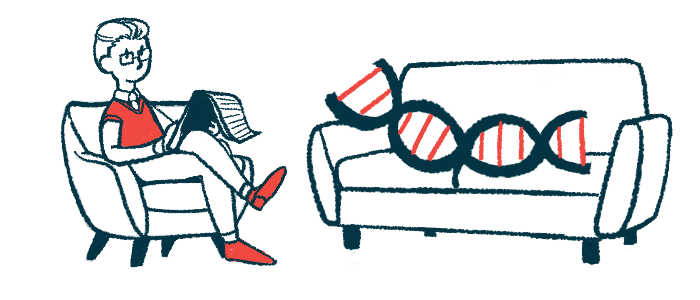Gene Therapy LYS-SAF302 Boosts or Stabilizes Development After 2 Years

Children with Sanfilippo syndrome type A, including those with severe disease, showed stable or continuously increasing cognitive, language, and motor functions two years after dosing with the investigational gene therapy LYS-SAF302, new data from the AAVance trial showed.
The therapy also maintained low levels of the disease-related biomarker heparan sulfate in the cerebrospinal fluid (CSF), the liquid that surrounds the brain and spinal cord, which was consistent with the therapy’s method of administration directly to the brain.
The AAVance trial’s two-year database has been locked and complete study results are expected by mid-September, according to Lysogene, the therapy’s developer. The company expects to begin discussions with regulatory authorities in the U.S. and Europe to determine the next steps.
“We are very pleased to confirm on a larger scale the encouraging data already observed earlier, notably stabilization or improvement in cognitive, language and motor functions in the younger patient population, even in those presenting with severe forms of the disease,” Marie Trad, MD, chief medical officer of Lysogene, said in a press release. “Full statistical analyses are underway with results expected in September this year.”
“This represents a very exciting milestone as it completes years of efforts by the Lysogene team to bring a treatment to patients with [Sanfilippo syndrome type A], a disease with a high unmet medical need,” Trad said. “By Q3 2022, we should have the necessary elements to discuss the next steps with the regulatory authorities.”
LYS-SAF302 is a one-time investigational gene therapy designed to deliver a healthy copy of the SGSH gene to the brain. Mutations in this gene lead to the toxic accumulation of heparan sulfate in cellular recycling units called lysosomes, causing systemwide tissue damage, especially to the brain.
The Phase 2/3 AAVance study (NCT03612869) tested the therapy in people with Sanfilippo syndrome type A, also called mucopolysaccharidosis type IIIA (MPS IIIA), ages 6 months and older, by surgical administration into the brain.
The study’s primary goal is a change in cognitive development quotient scores, reflecting a child’s neurodevelopment, which will be compared to untreated children followed in natural history studies.
Secondary goals include quality of life and the impact on disease-related biomarkers heparan sulfate as well as GM2 and GM3 gangliosides, two molecules thought to contribute to nerve damage in diseases such as Sanfilippo type A.
As previously reported, LYS-SAF302 treatment led to lower levels of heparan sulfate, GM2, and GM3 in eight patients with available data after six months and five after one year.
The new data, presented at the recent ADVANCE 2022 Sanfilippo Community Conference and the 3rd Annual Gene Therapy for Neurological Disorders Europe, focused on developmental changes and biomarkers two years after dosing in up to 19 trial participants.
Compared to the study’s start (baseline), there was a significant decrease of about 20% in average levels of heparan sulfate in the CSF at six, 12, and 24 months. The mean heparan sulfate level at two years was 1,654 nanograms per mL (ng/mL) compared to 2,159 at ng/mL at baseline.
After administration via brain surgery, the blood and CSF levels of neurofilament light (NFL), a marker for nerve damage, rose but fell below baseline levels, most likely due to the surgery, the company said. NFL bloodstream levels dropped by 33% 18 months after treatment and 41% after two years. Similar decreases in NFL were seen in the CSF after two years.
Three AAVance participants treated at 10, 13, and 31 months of age showed continuous improvement in cognitive, language, and motor functions two years after dosing, as assessed by the BSID-III (Bayley’s Scales of Infant Development-3).
Of two participants with severe disease, one had a cognitive developmental age that was 5–6 months higher than the highest cognitive age observed in natural history studies, while the other showed continuously improving cognitive development. A longer follow-up is needed to confirm the positive development in this patient, according to Lysogene.
Three other participants, treated at 24, 30, and 31 months of age, had stable cognitive development than baseline, as well as stable or continuously improving BSID-III language and motor development scores at two years. Among them, two had SGSH mutations associated with severe disease.
“Preliminary data for AAVance indicates that subjects with MPS IIIA treated prior to 31 months of age not only continued with increasing developmental age, but exceeded developmental ages of any MPS IIIA subjects within the natural history cohorts,” said principal investigator Raymond Wang, MD, director, Foundation of Caring Multidisciplinary Lysosomal Disorder program at CHOC Children’s Specialists in California.
“This data is highly suggestive of LYS-SAF302 efficacy in this treatment population, marking an important milestone as no treatment is currently available to slow the progression of MPS IIIA,” Wang added.







